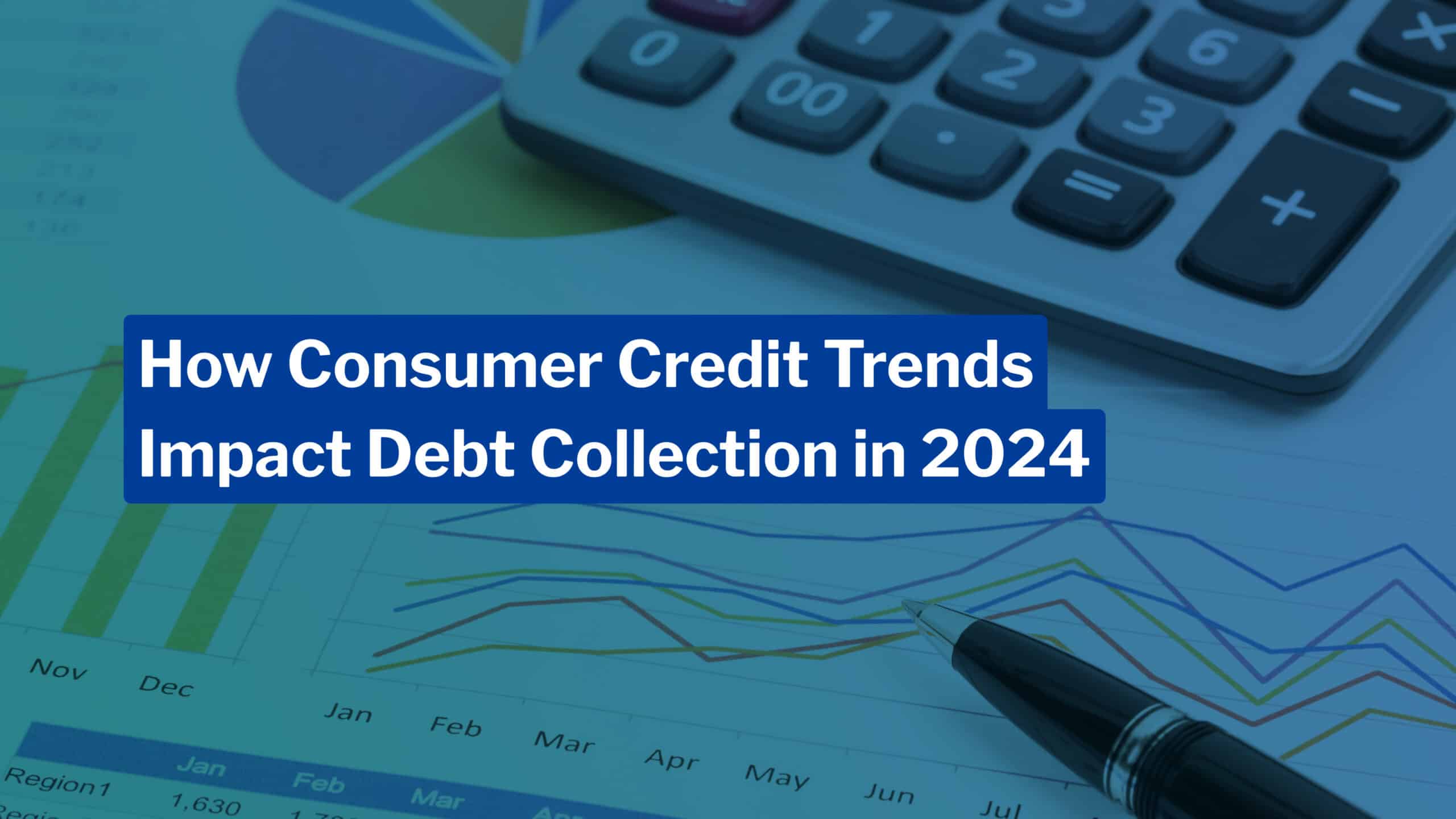
It’s that time of year again—the season of giving, which has landed nearly half (47%) of consumers in debt thanks to holiday spending in the past. And the struggle continues to be real for consumers with 68% reporting that inflation is stretching their holiday budgets thin and 89% of consumers reporting they feel tempted to spend more than they should.
For businesses, preparing for this almost inevitable holiday hangover should start now before the wave of past-due consumers comes rolling in (and rolling into late-stage delinquency further in the new year).
Let’s look at how 2024’s holiday shopping and consumer spending trends should influence your 2025 debt collection strategy.
Record-Breaking Holiday Consumer Spending
Although there are five fewer shopping days in this year’s holiday calendar, that hasn’t slowed consumer spending: the average US consumer intends to spend $1,063 in nominal terms on holiday-related purchases this year, up 7.9% from $985 in 2023. Online sales for Black Friday alone reached a record $10.8 billion, with roughly $11.3 million spent per minute between 10 a.m. and 2 p.m. for online shopping.
And how are consumers paying for these shopping sprees? Credit cards are a top choice for 59%, with half of those saying they plan to use two or more credit cards, but higher interest rates are curtailing the use of credit cards compared to previous years for 44% of consumers. Buy Now, Play Later (BNPL) options are another popular method to purchase items outside their immediate budget with 67% of parents reporting they are likely to use pay later plans to finance their holiday shopping.
Despite a determination to resist that temptation this year (67% of consumers said it’s more important to save money than to give the best gift), the record numbers in spending and the trends towards credit cards and BNPLs foreshadows how businesses across industries need to brace for the post-holiday uptick in delinquencies.
Why Holiday Spending Trends Affect Businesses Across Industries
Before they even bust out the wrapping paper, 30% of consumers reported being prepared to break their budgets and go into debt due to holiday spending.
While historically, credit card balances will rise significantly in the fourth quarter but then go down again in the first quarter of the new year, more consumers are carrying those heavier balances for longer—six in 10 consumers with credit card debt have had it for at least a year, up 10% from three years ago. And separate surveys found that about a third of consumers entered the shopping season with more than $5,000 in debt and 28% of shoppers who used credit cards have not paid off the presents they purchased last year.
So even if your organization isn’t directly selling holiday gifts, consumers’ ability to stretch their budget to cover all their expenses can be impacted.
How to Adapt Your Collection Strategy Based on Holiday Spending Trends
Acknowledging this record spending and rolling debt, what are the key takeaways to help improve your collection strategy moving into 2025?
Meet consumers where they are with digital-first communication
Consumers aren’t just shopping online—surveys find that 72% of respondents prefer to manage all their finances online or through a mobile app, so your outreach to collect on past-due payments should start there too. In fact, 98% of delinquent consumers serviced by TrueAccord resolve their debt without any human interaction thanks to our digital-first approach and self-serve portal.
But take an overall omnichannel approach to consumer engagement
While digital may be the growing consumer preference, don’t completely write-off traditional collection methods like phone calls and letters. There are many situations when digital may not be the ideal choice for outreach (such as lack of email contact, acquiring consent for digital communications where required, connecting with consumers unresponsive to digital outreach, among others), and not working with a collection partner that offers the full suite of communication channels means your business is missing out on recouping more.
Be empathetic to consumers (all year round)
More than half of consumers reported feeling stressed about their finances during the holiday season and, just like their gift-giving bills, these feelings can roll into the new year. But engaging with delinquent consumers through an empathic approach can encourage them to get back on track better than a generic template soliciting repayment. TrueAccord’s vast content library ensures consumers are getting the right message through the right channel at the right time thanks to our machine learning engine, HeartBeat, driven by data and insights from over 35 million consumer engagements accumulated over TrueAccord’s 12 years of service.
Ready to scale-up your debt collection strategy for better engagement and liquidation rates? Schedule a consultation with TrueAccord experts today!
Sources:









